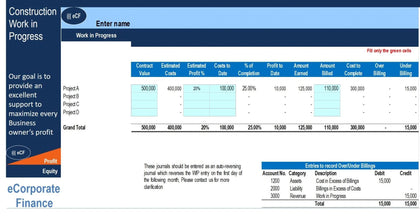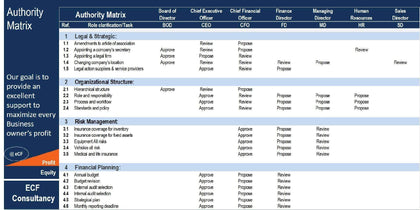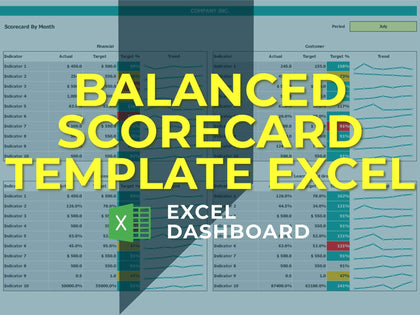Get SaaS Metrics Dashboard Template to track the SaaS business performance. Download SaaS dashboard and track core SaaS KPIs in excel.
SaaS Dashboard Template created in Excel spreadsheet format to assist SaaS Startups to track core SaaS metrics and polish their businesses.
Instant download. Save your Time, Money, and Efforts.
No need to learn new software! This comprehensive set of SaaS Metrics in one Excel template is everything you need.
This SaaS metrics Dashboard has more than 30 SaaS operational metrics. You just need to enter a few indicators, and the rest KPIs are calculated on the fly - saving you more time to focus on business.
All SaaS Metrics are broken down into three categories:
| ✔️ Customers Related Metrics (Visitors & Signups, New and Lost Customers, and more) | ✔️ SaaS Metrics (Monthly Recurring Revenue, Annual Recurring Revenue, Customer Lifetime Value, and more) |
| ✔️ Cash & Burn Metrics (Cash In and Cash Out, Cash Burn Rate, and more) | ✔️ Key Features of the SaaS Dashboard Excel Template |
| ✔️ 30+ SaaS Metrics in a single Excel template | ✔️ Enter Core Indicators and get 30+ SaaS KPIs calculated |
| ✔️ Visualize SaaS Indicators with easy-to-interpret graphs | ✔️ SaaS dashboard built for quick decision-making |
| ✔️ Investor-ready layout - share with ease | ✔️ Measure SaaS business performance |
| ✔️ Find actionable insights | ✔️ Collect all SaaS metrics in one place |
| ✔️ Pre-defined indicators calculation |
SaaS Dashboard Indicators available:
| ✔️ Visitor-to-Signup Conversion Rate | ✔️ Paying Customer Conversion rate |
| ✔️ MMR - Monthly Recurring Revenue | ✔️ Lost MRR |
| ✔️ Net MMR - Net Monthly Recurring Revenue | ✔️ ARPA - Average Revenue per Account |
| ✔️ CLTV - Customer Lifetime Value | ✔️ MRR churn rate |
| ✔️ Current cash burn (months) | ✔️ CAC - Customer Acquisition Cost |
| ✔️ Months to recover CAC |
QUICK RATIO
The Quick Ratio, devised by investor and co-founder of Social Capital Mamoon Hamid, gives investors, founders, and
team members an immediate view of a SaaS company's growth efficiency. The Quick Ratio shows the ratio of your revenue gains to your revenue losses, so you can see immediately if your company has both significant growth and low churn. Tracking your Quick Ratio will help you understand your own company better by considering both the effectiveness of your customer acquisition and your retention efforts.
Quick Ratio = New MRR + Expansion MRR / Churned MRR
CAC
Customer Acquisition Cost (CAC) measures the costs of acquiring new customers by adding up sales and marketing costs for a given period and dividing them by the number of new customers for that period. CAC calculations can vary in regard to the inclusion of variable and fixed (or overhead) costs. SaaS expert Lincoln Murphy talks about fully loaded CAC, which includes everything it takes to get a customer on board, from the cost of advertising, marketing, sales, support during the Free Trial, onboarding costs, etc (read Lincoln here). CAC metrics can also be determined on an individual account basis, by breaking down costs more granularly.
Customer Acquisition Cost (CAC) = Total sales costs + total marketing costs for a period / number of new customers over that period
LTV
Customer Lifetime Value (LTV) measures the amount of gross profit that is generated from a customer over the entire time they do business with a company. For SaaS businesses (software companies that employ a subscription-based business model), LTV is calculated by multiplying the average period payment (this may be a monthly or annual payment depending on the SaaS company), by the average gross margin, by the number of periods the customer is expected to make a payment.
LTV = ARPA / Churn rate
CUSTOMER CHURN RATE
Customer Churn Rate (also known as Customer Attrition Rate) is the rate at which a subscription-based company (such as a SaaS company, a telephone company, an internet service company or a bank etc.) is losing its customers due to account cancellations or non-renewal of subscriptions. Customer Churn Rate is a critical KPI for these types of businesses because (1) the cost of retaining a current customer is almost always less than attaining a new one, and (2) for businesses with recurring revenue models, keeping a customer can be worth hundreds and even thousands of dollars in future revenue.
LTV TO CAC
The Customer Lifetime Value to Customer Acquisition (LTV / CAC) ratio measures the relationship between the lifetime value of a customer and the cost of acquiring that customer. The metric is computed by dividing LTV by CAC. It is a signal of customer profitability, and of sales and marketing efficiency.
LTV TO CAC = Customer Lifetime Value / Customer Acquisition Cost
MAGIC NUMBER
Magic Number is a common metric showing how efficiently Software-as-a-Service firm is growing its recurring revenue compared with sales and marketing spendings. The Magic Number of 1.0 means that marketing and sales spendings will come back to the company's bank account in revenue in one year's time. The result of 1.0 is generally the desired outcome by SaaS businesses. A downside of this metric is that it doesn't take into account various important factors like churn, or gross margins.
Magic Number= (Last Quarter Recurring Revenue - Quarter-Before less Last Recurring Revenue) *4 / Quarter-Before less Last Sales and Marketing Expense.
ARPA
Average Revenue per Account (sometimes known as Average Revenue per User or per Unit), usually abbreviated to ARPA, is a measure of the average revenue generated per account, typically per year or month. You could also say that it represents the Average Revenue per Customer, but remember that a customer may have more than one account depending on your product/services characteristics.
Average revenue per account allows for the analysis of a company's revenue generation and growth at the per-unit level, which can help investors to identify which products are high or low revenue-generators.
MRR & ARR
Your monthly recurring revenue (MRR) or the annual equivalent (annual recurring revenue) quite literally have nothing to do with any of these other three from an accounting perspective. MRR isn't part of GAAP because there is no specific delineation of GAAP for subscription or SaaS businesses. The lack of standards doesn't mean MRR isn't important though. MRR is a product and marketing focused metric that tracks the monthly recurring revenue customers have committed to spend in your business. ARR is simply the annualized version of MRR. In this manner, MRR and ARR are closer to bookings than any of the other GAAP metrics.

























































